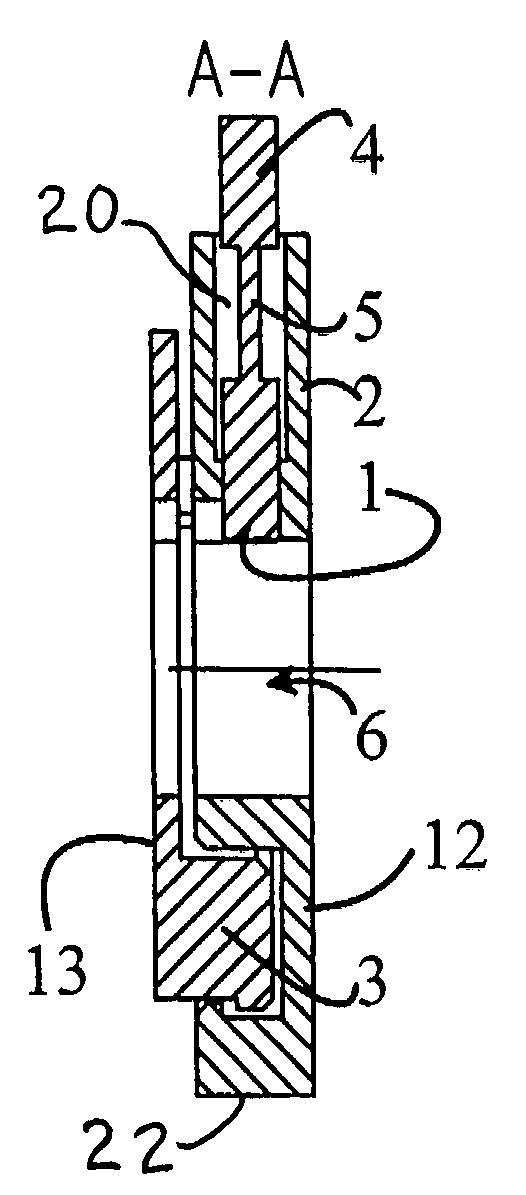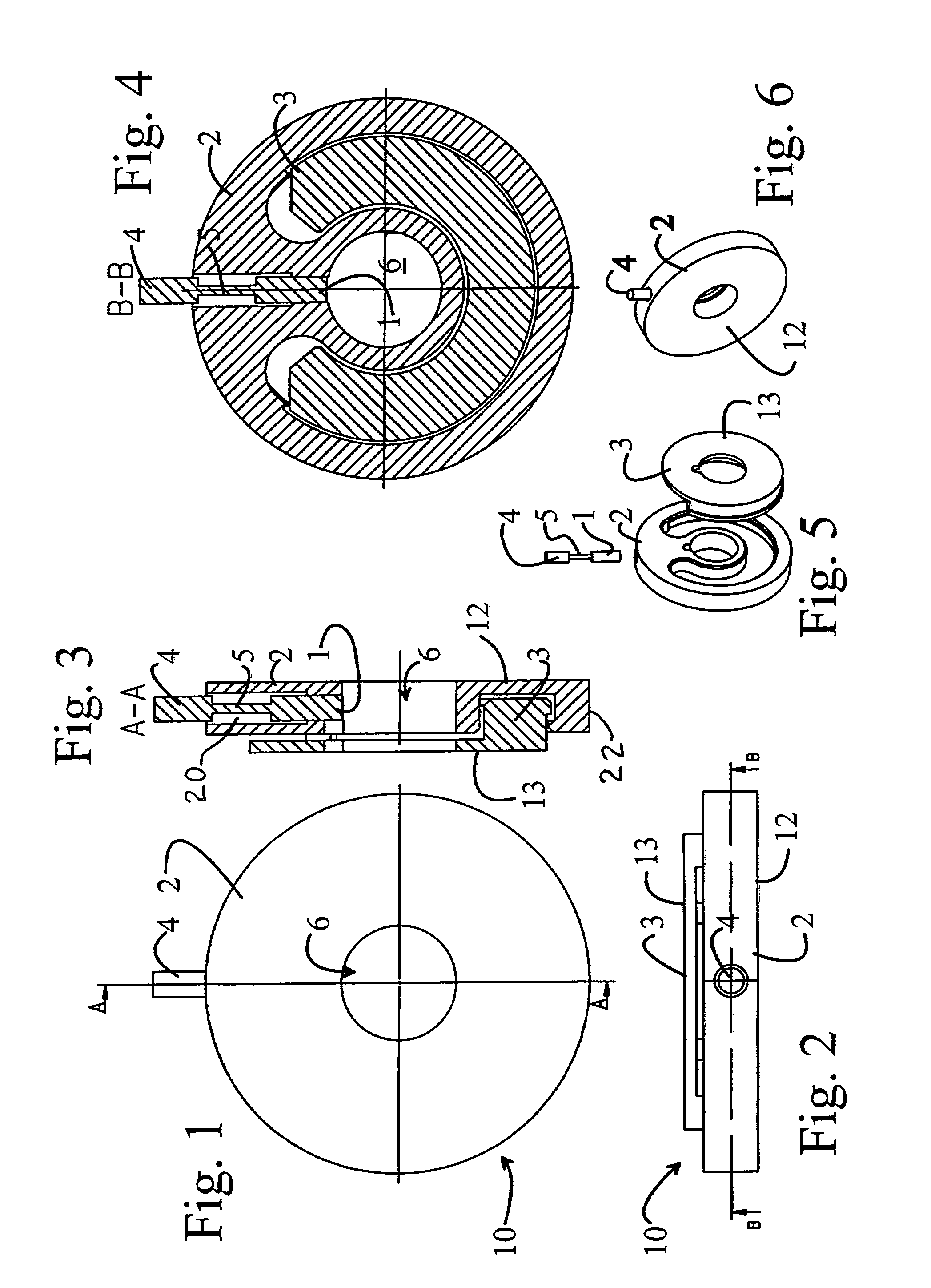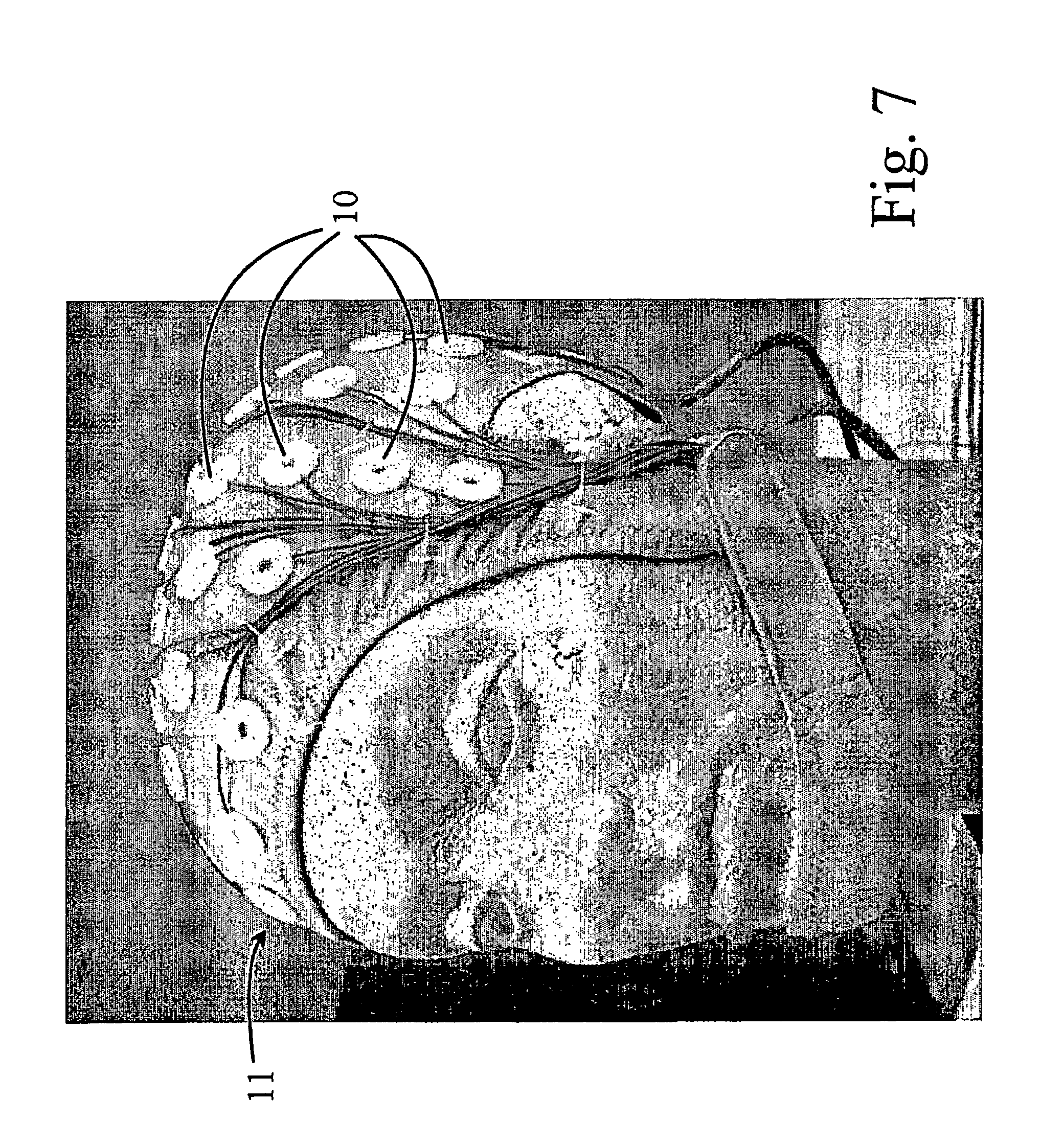Electrode structure for measuring electrical responses from the human body
a technology of electrical responses and electrodes, applied in electromyography, medical science, sensors, etc., can solve the problems of reducing the accuracy of measurement, interfering signals, and not always achieving satisfactory results, so as to reduce the creation of eddy currents
- Summary
- Abstract
- Description
- Claims
- Application Information
AI Technical Summary
Benefits of technology
Problems solved by technology
Method used
Image
Examples
Embodiment Construction
[0027]According to FIG. 1, the electrode structure according to the invention is examined from beneath, in other words, from the direction of the measurement subject. The electrode structure 10 includes a body piece 2, from which a measuring lead 4 protrudes. Electrical contact from the measurement subject, typically a person's scalp, to the electrode material, is formed through the hole 6, with the aid of an electrically conductive paste. According to the figure, the electrode structure 10 is essentially disc-shaped.
[0028]FIG. 2 shows the locking piece 3 connected to the body piece, by means of which the measuring cap described later is locked between the body piece and the locking piece. The locking piece 3 is located on the outer surface of the electrode structure, if the inner surface 12 is defined as the measuring surface, for example, the scalp.
[0029]FIG. 3 shows the construction of the measuring electrode 10 in greater detail. The measuring opening 6 extends through the entir...
PUM
 Login to View More
Login to View More Abstract
Description
Claims
Application Information
 Login to View More
Login to View More - R&D
- Intellectual Property
- Life Sciences
- Materials
- Tech Scout
- Unparalleled Data Quality
- Higher Quality Content
- 60% Fewer Hallucinations
Browse by: Latest US Patents, China's latest patents, Technical Efficacy Thesaurus, Application Domain, Technology Topic, Popular Technical Reports.
© 2025 PatSnap. All rights reserved.Legal|Privacy policy|Modern Slavery Act Transparency Statement|Sitemap|About US| Contact US: help@patsnap.com



